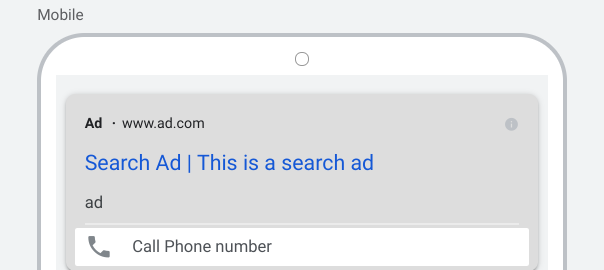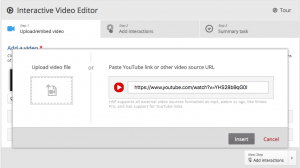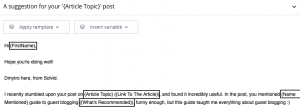How online course providers can use ad extensions to increase return on investment (ROI) in Google Ads.
According to Google data, ad extensions increase click-through rates (CTRs) by an average of 10-15% but that’s not the only reason to use them. Ad extensions also incentivise users to take action, which means higher conversion rates, purchases and ROI – especially if you take the time to create and optimise manual ad extensions in Google Ads.
In this article, we look at how online course providers can use ad extensions to increase their PPC return on investment and choose which ad extensions to use for different marketing goals.
A summary of ad extensions in Google Ads
In Google Ads, there are ten ad extensions available that you can manually create and apply to campaigns or ad groups:
- Location extensions: Encourage people to visit your business.
- Affiliate location extensions: Help people find retail chain stores that sell your products.
- Callout extensions: Add additional text to your ad, like “free delivery” or “24/7 customer support”. Callouts can be used to encourage people to convert offline.
- Call extensions: Encourage people to call your business by adding a phone number or call button to your ads.
- Sitelink extensions: Link people directly to specific pages of your website (like ‘hours’ and ‘sign up now’).
- Structured snippet extensions: Showcase information that potential customers will find most valuable by selecting a predefined header (like product or service category) and listing items.
- Price extensions: Showcase your services or product categories with their prices, so that people can browse your products right from your ad.
- App extensions: Encourage people to download your app. Available globally for Android and iOS mobile devices, including tablets.
- Lead form extensions: Get people to sign up from your ad. Available globally for mobile devices and tablets.
- Promotion extensions: Highlight your sales and promotions.
Chances are, you’re not going to use all of these – for example, affiliate location extensions aren’t much use to an online course provider unless you’re also selling educational products in retail stores.
You’ve also got seven automated ad extensions available, most of which are automated versions of the first six ad extensions listed above. The seventh automated extension is seller rating extensions and there’s no manual equivalent for this.
How do ad extensions improve PPC ROI?
Ad extensions provide more information in your ads and encourage users to click through to your website or complete actions by interacting directly with your ad – eg: downloading an app or filling out a lead generation form.
The primary goal of ad extensions is to increase click-through rates but campaigns and ad groups using ad extensions generally achieve higher conversion rates and increased ROI, too.
There are a number of reasons for this:
- Visibility: Ad extensions make your ads larger and more visible over ads not using them – especially when sitelink extensions show in your ads.
- Relevance: Adding more information to your ads increases the relevance of your message, meaning users are more likely to commit after clicking through.
- Incentive: You can use ad extensions to build incentive before the click, increasing the likelihood of converting.
- Conversions: Some ad extensions are designed to convert from the ad, generating phone calls, app downloads or form completions.
- CPCs: Ad extensions are a component of Ad Rank, which means using them effectively can reduce the amount you pay for clicks and, in turn, conversions and sales.
With manual ad extensions, your aim is to pinpoint the key interests of your target audiences and provide relevant information to match or actions they can take to satisfy their needs faster: visiting specific pages, taking up special offers or calling your business directly.
By satisfying these needs and encouraging prospects to take actions sooner, clicks become more meaningful and the likelihood of conversions and purchases increases – all of which means more revenue, less budget wasted on clicks that don’t convert and a higher return on investment.
You can track the performance of ad extensions in Google Ads by navigating to Ads & extensions > Extensions but the most reliable way to see how they impact ROI is to run duplicate ad groups with and without ad extensions to exclude any other variables.
What are the most important ad extensions for online course providers?
The most important for online course providers is getting people to convert on your website. In Google Ads, there are five ad extensions designed to help you do this:
- Sitelink extensions
- Callout extensions
- Structured snippets extensions
- Price extensions
- Promotion extensions
So we’re going to start by looking at these and we’re also going to talk about one particular automated extension that can help with this marketing goal: seller rating extensions.
1. Sitelink extensions: Link people directly to relevant pages on your website
Sitelink extensions add clickable links to your ad, which users can use to navigate to specific pages on your website. So the headline directs users to your landing page, as normal, but users who are interested in a more specific course, for example, can click right through to the relevant page.

Here are the key benefits of using sitelink extensions:
- Your ad is bigger
- You can target specific interests
- You can provide more contextual information
- You can direct users to lead generation pages
- Increased click-through rates
- Increased conversion rates
So let’s say someone types “online university courses” into Google and sees the following ad:

Here, Arden uses sitelink extensions for its most important lead generation pages. The whole ad promotes value and this message is consistent through its choice of links with one directing to a page for free master’s degrees and another on flexible payment options.
Sitelink extensions allow you to pinpoint specific interests and direct users to the most relevant page, cutting out unnecessary steps and delivering a more targeted message from the very first click – both of which are good news for conversion rates.
Up to six sitelinks can show in ads for desktop queries while as many as eight can show in mobile ads. For more information on how to add sitelinks to your ads, you can visit the official Google Ads documentation.
2. Callout extensions: Increase incentive by adding details about your offer
With callout extensions, you can add important details about your offer that can help your ad stand out from the pack. This is a great extension to use if you’ve got unique selling points that you want to promote. Let’s say you provide tutor support with all your courses, provide free materials and allow students to pay their fees monthly – these are all characteristics you might want to put across in callout extensions.

3. Structured snippet extensions: Show which courses you provide
Structured snippets allow you to highlight some of the courses you provide in your ad. When you create a structured snippet extension in Google Ads, you start by selecting a Header, which specifies the type of information you’re providing.

Here, you can select either Courses or Degree programs, depending on which is more relevant to your ad. Then, you can add the courses you want to highlight in the Values fields – eg: creative writing, journalism and literature studies.
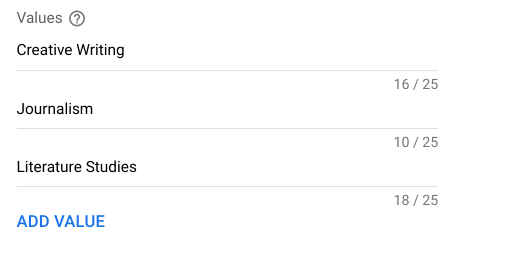
You can add structured snippet extensions at the account, campaign and ad group levels and you may find these are most effective at the ad group level, as this allows you to highlight related courses. For example, if someone types in “study science online,” you might want to include physics, chemistry, and molecular biology in your structured snippet extensions to show that you provide courses across the discipline.
4. Price extensions: Show the prices of your cheapest, most popular or most important courses
Quite simply, price extensions allow you to show the prices of certain courses in your ads. Each course links to the relevant page and you can also add a description to provide more information about your pricing – for example, the £9.99 deposit-only offer shown below.
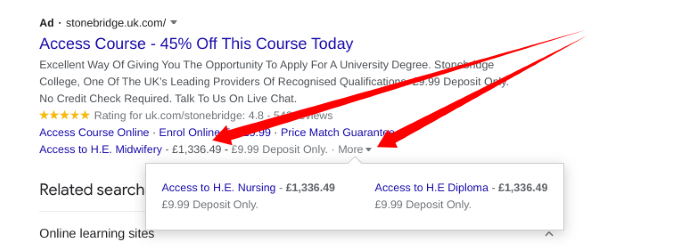
Price extensions are ideal if you’re competitive or have a pricing policy that makes it easier for students to pay their fees. They’re also great for ad messages that focus on price and affordability or any relevant policies you have, such as price matching.
5. Promotion extensions: Highlight your deals and promotions
With promotion extensions, you can show searchers that you’re running special deals and other incentives that encourage them to book a course now rather than miss out.

When you create promotion extensions in Google Ads, you can choose from four types of deal: monetary discount, percent discount, up to monetary discount or up to percentage discount. You can also add conditions so that deals apply to orders over a certain value or offer promo codes in your ad.
Promotion extensions are designed to run for a certain period and there are dozens of seasonal occasions you can choose to run your offer for – eg: back to school, Black Friday, etc. Alternatively, you can set your promotion for a custom time period by defining start and end dates or run it indefinitely by keeping the default “None” settings selected.
6. Seller rating extensions: Impress buyers by showing your seller rating score
Seller rating extensions show a score out of five stars, based on reviews left by customers who have previously bought from you. Unlike product review scores, seller ratings tell potential customers what it’s like to buy from you as a business and the aim is to increase confidence in new buyers that their money is well spent with you.

Ad extensions for other marketing goals
If you only sell online courses through your website, then the ad extensions we’ve looked at so far are the most important ones for turning PPC clicks into purchases. However, depending on the nature of your business, it’s possible to have other marketing goals. For example, you might also provide on-premise courses at a business location or have a mobile app for students to download and access course material.
So, while many of the ad extensions available in Google Ads may not sound particularly relevant to online course providers, there are specific use cases where they can have value.
App extensions: Encourage people to download your app
If you have a mobile app, getting users to download and create an account establishes a direct channel for nurturing leads and keeping them engaged. For a company like Udemy, app downloads is a key marketing goal and app extensions allow mobile users to download your mobile app by clicking the install button in your ad.
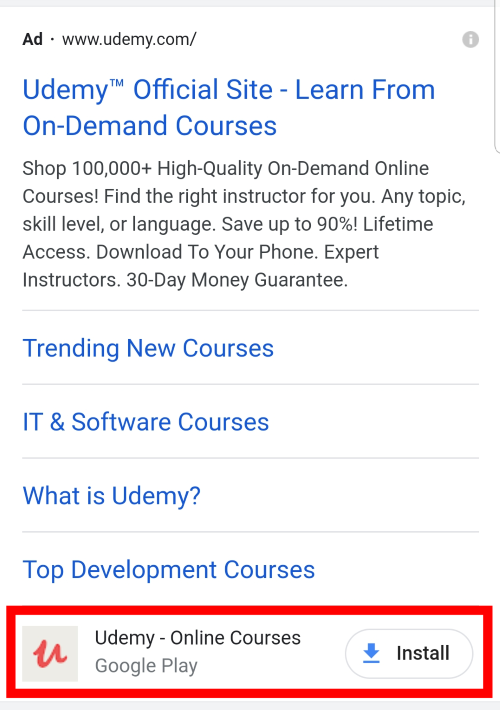
Lead form extensions: Capture leads from your ad
Lead form extensions allow you to capture leads from your ads by placing a call-to-action tab at the bottom of your ad where you can encourage prospects to sign up without even clicking through to your website.

When a user clicks on the CTA in your lead form extension, a web form pops up in the browser with their contact details automatically inserted in the relevant fields (if they’re signed into Google). All they need to do is verify the information is correct and click the submit button.
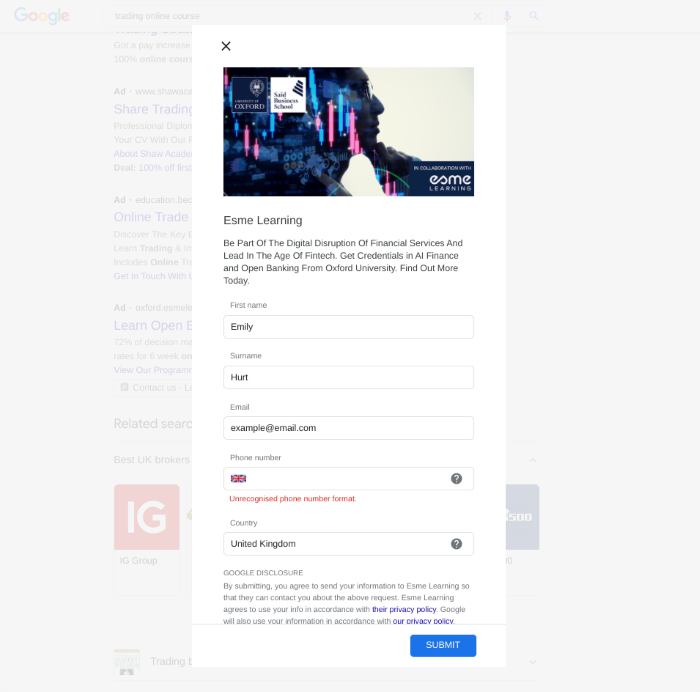
Location extensions: Encourage people to visit your business
Location extensions show the address of your business with the aim of encouraging users to visit you. Of course, if you’re strictly an online course provider this might not be of much use to you but if you provide any on-premise services in any capacity or run campaigns designed to get people through the door, location extensions can help.

Affiliate location extensions: Help people find stores selling your products
Affiliate location extensions direct users to retail stores where they can buy your products so you’re only going to use these if you’ve got educational products for sale in high street locations.
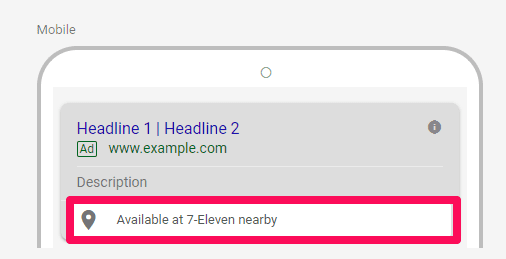
Call extensions: Encourage people to call your business
Call extensions place a phone number on your ads, which users can click from their mobile devices to call you directly. If you take online bookings or queries from potential students, this can be a useful extension for mobile campaigns so you can speak to leads directly.
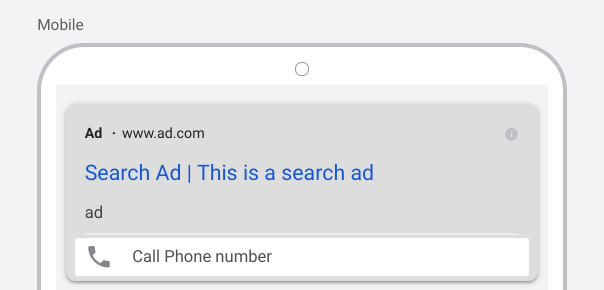
What about automated extensions?
By default, campaigns in Google Ads are eligible for automated extensions, which means you (and users) may see any of the following in your ads, whether you like it or not:
- Automated call extensions: When your website indicates that your business goals include getting people to call you, Google Ads may set up automated call extensions. On mobile, people can click your extension to call your business.
- Dynamic sitelink extensions: Help to get people to the right place on your website. For example, if you run a restaurant, your sitelinks might include links with the following display text: Hours, Menu, Delivery.
- Dynamic structured snippet extensions: Include additional descriptive text that helps people to get a better sense of the range of the products and services that your business has to offer.
- Automated location extensions: Help people find your physical business locations by showing your ads with your address, directions to your location or the distance to your business.
- Affiliate location extensions: Help shoppers find retailers that sell your products (e.g. if you’re an electronics manufacturer who partners with retailers to sell TVs and other devices).
- Seller ratings extensions: Show a combination of information and reviews next to your ads, letting people know which advertisers are highly rated for quality service.
- Dynamic callout extensions: Help people decide whether to visit your site by showing relevant information about the products and services offered on your site.
Google determines when these extensions should be used, based on the search query in question and your campaign goal. It generates the content for you automatically by using the information on your landing page, ad copy, domain information, Google My Business profile and several other sources (eg: third-party review sites for seller rating extensions).
If you’re not interested in manually creating ad extensions, automated extensions can help increase your click-through rates and have a positive impact on ROI.
However, the automated nature and lack of control inherent with automated extensions often result in less relevant, compelling ad copy than you should be able to achieve manually – and this is what tends to make the real difference with turning clicks into conversions, revenue and ROI.
You can turn off automated extensions in Google ads by heading to Ads & extensions > Extensions in the main navigation menu and then clicking on Automated Extensions at the bottom of the page.
On the automated extensions page, you’ll see a set of icons at the top-right of the interface where you want to click on the More icon.
Click on Advanced options and, on the next page, you can select Turn off specific automated extensions to select which extensions you want to disable.
So, for example, you could turn off all automated extensions except for Seller ratings, which will allow Google to show these on relevant ads.
Digital & Social Articles on Business 2 Community
(46)
Report Post